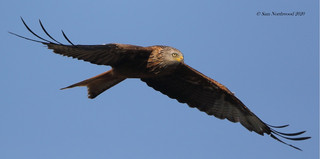Long-staying Lammergeier leads list of raptors
- Sam
- Aug 6, 2020
- 2 min read
Visiting my parents down south was all the excuse I needed to detour via the Peak District in the hope of connecting with a super-mega, albeit one with dodgy credentials and the potential to be relegated to Category E. The bird in question was going to be tough to pin down: although it seemed to be favouring a crag near Crowden, there was no guarantee of it still being there when we arrived and on leaving its roost site it could be anywhere within a radius of about 20 miles if its previous habits were anything to go by. So, news from some fellow birders returning from the viewing site that the bird hadn't been seen for two hours was not well received. Still, my son and I were here now and we might as well give it a go. We reached an open area where others had gathered and casually set up the scope in the unlikely event that the bird would reappear; I contemplated how different things would have been had we arrived earlier and the views we would be getting on what was a lovely sunny day. Suddenly, though, barely 10 minutes after we arrived, someone further up the path whistled and was pointing high up towards the ridge behind us. I put the bins up and instantly called it: "There it is!", I cried - my first ever "British" Lammergeier (a.k.a. Bearded Vulture)! The huge creature dwarfed the nearby Buzzard (it seemed almost twice the size) and drifted casually and effortlessly over the ridge,
its home from home. Even my son took an interest and enjoyed watching it through the scope. How lucky were we! (Others, I know, had tried three or four times without success.) I got some decent record shots and then, keen to continue our journey south, left others to it and returned to the car-park grinning from ear to ear. Down in the East Midlands, raptors continued to dominate the scene with Red Kites, a pale-phase Buzzard, Kestrels and a lingering Sparrowhawk showing especially well. Nuthatches formed part of the supporting cast.
























Comments